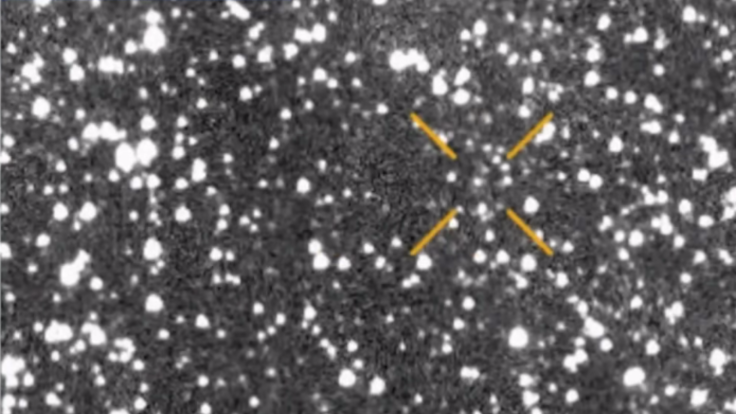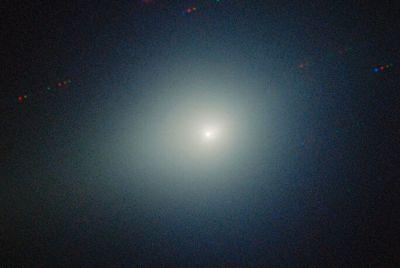3I/ATLAS Trajectory: Harvard Expert Claims Something Beyond Gravity is Active
Professor Avi Loeb says the newly discovered interstellar object 3I/ATLAS shows signs of motion not fully explained by gravity, sparking debate over possible unknown physical forces.

A Harvard astrophysicist has stirred debate in the scientific community after suggesting that the mysterious interstellar object known as 3I/ATLAS may be moving under the influence of a force other than gravity.
Professor Avi Loeb, who leads Harvard University's Galileo Project, stated that the comet-like body's path through the solar system exhibits unusual features that standard celestial mechanics may not fully explain.
In a blog post on Medium, Loeb wrote that discrepancies between 3I/ATLAS's expected and observed positions suggest 'an anomalously massive object' if only gravity and sublimation are acting upon it.
'The lack of non-gravitational acceleration implies an unusually high mass for an interstellar comet,' Loeb said, adding that one model estimates a lower mass limit of about 33 billion tons based on an acceleration upper bound of 15 m day⁻².
Loeb stressed that 3I/ATLAS is 'most likely natural,' but maintained that the scientific community should remain open to 'non-gravitational' influences that could involve unknown physical mechanisms or even artificial propulsion.
The Interstellar Visitor Capturing Scientific Attention
Formally designated C/2025 N1 (ATLAS), the object was discovered on July 1 by the Asteroid Terrestrial-impact Last Alert System in Chile.
Its hyperbolic trajectory confirms that it is not gravitationally bound to the Sun and will leave the solar system after its fly-by, according to Euronews Next.
What makes 3I/ATLAS particularly intriguing is the orientation of its orbit. Loeb observed that its trajectory is aligned to within five degrees of the ecliptic plane — the flat, disk-like region in which most planets orbit the Sun, making it 'statistically improbable' that the alignment occurred by chance.
He estimated the probability of such a coincidence at just 0.2 per cent, according to Newsweek.
A report by Universe Today, likewise, noted that '3I/ATLAS flew in from outside the solar system almost at the same angle as the solar system plane.'
The report called the alignment 'surprising' given that interstellar objects are expected to enter from random directions.
What the Data Reveal About 3I/ATLAS
Astronomers tracking 3I/ATLAS have confirmed that it displays both familiar and exceptional traits.
According to Newsweek, the object reached its closest approach to the Sun (perihelion) around October 29–30, at a distance of roughly 1.4 astronomical units (AU)—slightly farther than Earth's orbit.
Infrared data collected by the James Webb Space Telescope (JWST) revealed that the comet's coma--the envelope of gas surrounding its nucleus--has an unusually high carbon-dioxide-to-water ratio of 8 ± 1, one of the highest ever observed, according to a study posted on arXiv.
Additional ultraviolet observations detected hydroxyl emissions (produced by water breakdown) at about 3.5 AU from the Sun, indicating that over 20 per cent of 3I/ATLAS's surface is active, significantly higher than typical solar system comets, another arXiv paper reported.
These results suggest that while 3I/ATLAS behaves like a comet, its composition and level of activity make it stand out among known celestial bodies.
NASA and Other Experts Urge Caution
Not all scientists share Loeb's enthusiasm for alternative explanations. Tom Statler, a NASA planetary scientist, told The Guardian that 3I/ATLAS looks like a comet and 'very, very strongly resembles, in just about every way, the comets that we know.'
He acknowledged, however, that 3I/ATLAS displays some unusual characteristics.
Other experts believe the observed anomalies can be explained naturally, such as by differences in composition, structure, or exposure to cosmic radiation.
Many also point out that previous interstellar visitors, such as ʻOumuamua in 2017 and 2I/Borisov in 2019, displayed unexpected properties that were eventually attributed to natural causes.
Nonetheless, Loeb's remarks have rekindled curiosity about what such objects might reveal about the broader galaxy.
His earlier claims that ʻOumuamua might have been an artificial probe continue to generate controversy—and public fascination.
A Broader Cosmic Perspective
For scientists, 3I/ATLAS represents an unprecedented opportunity to study material from beyond our solar system.
With only three interstellar objects ever detected, each new observation helps astronomers refine theories about planetary formation and the distribution of matter in the Milky Way.
Loeb argues that open-mindedness is essential to scientific progress. 'If we dismiss outliers too quickly, we may miss the most important discoveries,' he wrote in his Medium essay.
As 3I/ATLAS travels back toward interstellar space, astronomers are monitoring its motion for post-perihelion changes. Any deviation unexplained by outgassing or solar pressure could lend weight to Loeb's controversial hypothesis--or confirm that the universe still holds surprises best explained by nature itself.
Conclusion
The 3I/ATLAS trajectory is unusual in terms of chemistry and geometry; yet, the present data fit a natural, CO₂-rich interstellar comet.
The decisive test is continued tracking after perihelion: if the motion remains consistent with gravity plus outgassing, Loeb's 'beyond gravity' idea weakens; if not, the case is reopened. Either way, 3I/ATLAS expands our expectations of what we can learn from interstellar visitors.
© Copyright IBTimes 2025. All rights reserved.


















